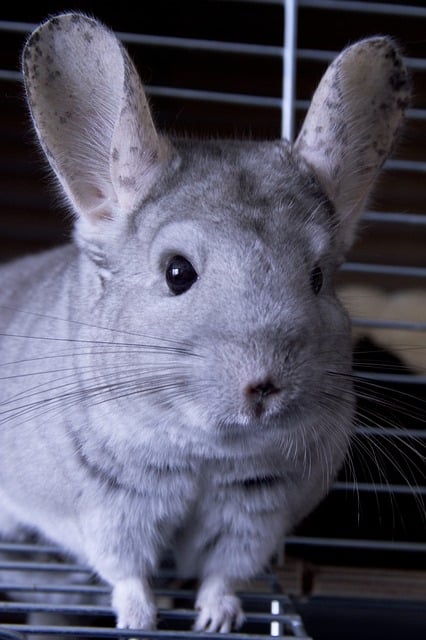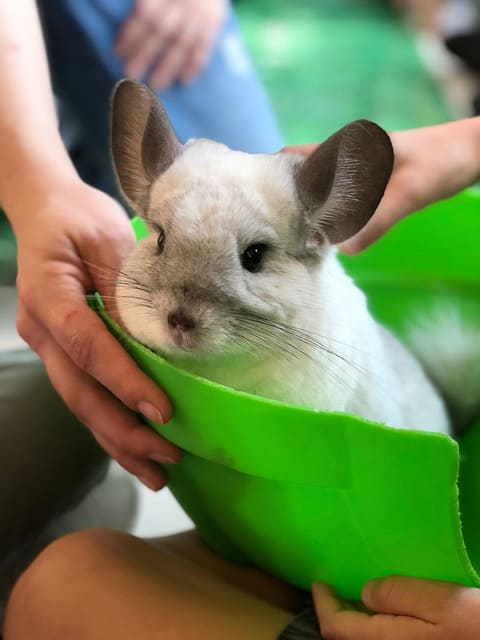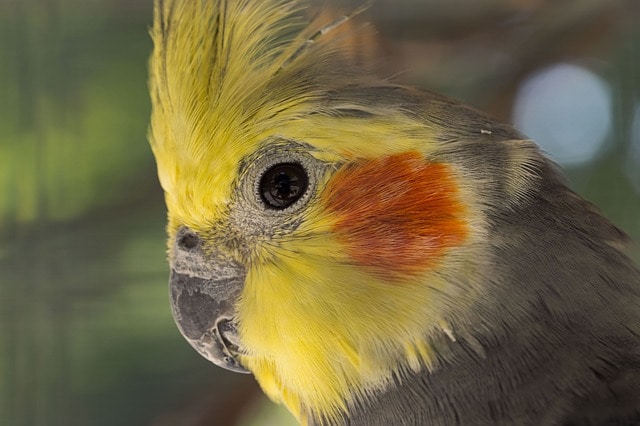I wanted to add a new pet to our family, and the chinchilla was my first choice. As I was getting closer to making my decision, I wanted to know if chinchillas need to have a bath any how much it would take to help keep it clean. You may now be wondering the same thing if so read on.

Do Chinchillas Take A Bath? Yes, chinchillas do take baths. But not with soap and water, they take a bath in sand or dust. They will roll around in the dust, this removes any excess oil and dirt from their fur. Avoid getting a chinchilla wet, their fur is so dense it is hard to get them thoroughly dry.
You never want to bathe your chinchilla in water. It can cause fur fungus. They can also become cold and hypothermic very easily. If they get something sticky stuck in their fur, a chinchilla will reject or pull out that fur and grow some new fur. It is much more important to spread out their natural oils with the dust and to keep them dry than it is to get out something sticky.
Your chinchilla will not die without getting a bath. However, it will not be comfortable and happy. Just like when you don’t wash your hair you start feeling yucky, his fur will get oily and dirty without a dust bath. He will therefore feel gross and miserable.
What You Will Need
You will need to have something for them to bathe in. This can be a dry dust bath-house that you can purchase at most pet stores, or on-line. You may even be able to get one from Walmart depending on your location. They come in many shapes, colors, and sizes. They can also come in an array of materials from plastic, ceramic, wood, and even glass.
You will want to watch if you get a plastic one so your chinchilla doesn’t chew on it. He will probably be so thrilled with the bath that he won’t unless he is left alone with it for to long.
You may use something that you already have on hand, like a fishbowl. You just need to make sure it is stable. Your imagination is all you need to figure out what to use. You need to make sure that you can put about 2 inches of the sand/dust in and keep it contained. And that it will allow enough room for your chinchilla to move around and roll in the dust.
The Dust
I personally like the sand that is made of 100% Mountain Volcanic Pumice. It has almost no dust. This is what they bathe with in the wild. I think staying closer to their natural habitat is better. The more dust that the bath has in it the higher the chance that it will inflame and irritate the eyes.
There are also a number of other bath dust products that come highly recommended. I will not list brands but I will say that all the best ones seem to be made with 100% Blue Cloud Dust.
Whichever product you choose to use, they can be used for multiple baths. You can usually get 2-3 baths done before having to replace the dust in the container. If it starts to clump or has a lot of debris in it that is when you will have to dump it and get new dust.
You should be able to get either the sand or the dust at any pet store or pet supply store. Of course, you can also find them on-line. You may also be able to get them at your local big-box store if they sell pet items. You will just have to try some and see what you and your chinchilla likes the best.
How Often and For How Long
You should give them a bath every 3-4 days. This will vary if you live in a humid and hot area, then they may need one more often. If they are not bathed enough their fur will become oily and pick up more dirt. This can also keep their fur wet underneath.
A dust bath should last from 5-10 minutes each bath. This will assure that the dust has penetrated the fur and also has worked its way back to the surface. This can be adjusted depending on the thickness of the hair and the humidity.
Your chinchilla can entertain you with the antics while taking a dust bath. They are rather comical while rolling and twisting during bath time. Sit back watch, laugh, and enjoy.
So far I’ve covered for you what you will need to start. There are some very interesting things that go along with this dust bath. I’m looking forward to getting into some other aspects of this playful ritual.
Don’t Over Do It
Do not just leave the dust bath in the cage all the time. Your chinchilla may stay in it for extended periods and cause damage to its skin. If they are in it for to long they can actually get dry enough to cause their skin to crack, and in some cases even start bleeding.
They may also start to use the bath as a place to do their business. It isn’t advisable to let this habit get started. Keeping bath time fun and good for both you and your chinchilla.
Other Benefits For Your Chinchilla
If your chinchilla has gotten fleas or mites, you can give the bath daily till the infestation is gone. The dust will dislodge the parasites from the hair causing it to fall off. If this happens you will want to change the dust after each bath, carefully disposing of the used dust. You will still have to watch and make sure their skin isn’t getting to dry. You will have to take them to the vet if this happens.
The best time of day to do the bath is when they are most active in the evening before playing. This is when they are well awake and ready for some time to play in the dust. However, if you can only do it in the morning hours your chinchilla will still be happy to get one.
What other things will keep them clean?
Chinchillas will also clean their faces and whiskers with their paws, much like a cat does. If 2 chinchillas are together they will groom each other. You can get a comb in the 5-7 range to help with cleaning, especially during heavier shedding.
You can aid your chinchilla in keeping clean by keeping his cage clean. His poop and all chewed chips should be cleaned out each day. And at least once a week you should do a total washdown of the entire cage and all contents.
The bedding you choose can make a difference as well. Aspen or Kiln Dried Pine shavings. Even shredded newspapers can be used. You can pull out any bedding that has become wet when you see it, this will help your chinchilla stay clean and fresh.
There are also fleece linings, but these do not come pre-sized for most cages so you may have to make your own. The advantage to the fleece liners is that they can be washed and reused. They are also good for chinchillas feet, keeping them from injuries that some beddings may cause. And most chinchillas will not chew on it.
Avoid using Cedar, scented shavings, blankets, and even cat litter. The chinchilla will chew on them and they are harmful to its digestive system.





